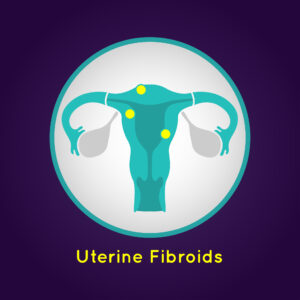Uterine fibroids can cause a variety of symptoms such as heavy menstrual bleeding, pelvic pain, and pressure on the bladder or rectum. While there are various treatment options available, interventional radiology offers a minimally invasive approach that can provide relief with less downtime and faster recovery. In this blog post, we will explore how interventional radiology can be used to treat uterine fibroids and help patients regain their quality of life.

Interventional radiology is a specialized field that uses imaging techniques such as ultrasound, CT scans, and MRI to guide minimally invasive procedures. When it comes to treating uterine fibroids, one common procedure is called uterine artery embolization (UAE). During UAE, a small catheter is inserted into the blood vessels that supply the fibroids, and tiny particles are injected to block the blood flow. This causes the fibroids to shrink over time, resulting in symptom relief for many patients.
Another interventional radiology procedure used to treat uterine fibroids is magnetic resonance-guided focused ultrasound surgery (MRgFUS). This non-invasive technique uses high-intensity ultrasound waves to heat and destroy the fibroid tissue while leaving surrounding healthy tissue unharmed. MRgFUS is performed inside an MRI scanner, allowing for real-time monitoring of the treatment and precise targeting of the fibroids.
Compared to traditional surgical options such as hysterectomy or myomectomy, interventional radiology procedures offer several advantages for treating uterine fibroids in Pueblo. These procedures are typically performed on an outpatient basis or with a short hospital stay, allowing patients to return to their normal activities sooner. Additionally, they do not involve major incisions or general anesthesia, reducing the risk of complications and speeding up recovery time.
For women who are looking for a less invasive alternative to surgery for their uterine fibroids, interventional radiology may be a suitable option. It is important for patients to consult with their healthcare provider to determine if they are candidates for these procedures based on factors such as the size and location of their fibroids, overall health status, and personal preferences. By exploring all available treatment options and discussing them with a knowledgeable healthcare team, women can make informed decisions about managing their uterine fibroids.
Interventional radiology offers a minimally invasive approach to treating uterine fibroids that can provide significant symptom relief without the need for major surgery. Procedures such as uterine artery embolization and MRgFUS allow patients to avoid lengthy hospital stays and extended recovery periods associated with traditional surgical options. By considering interventional radiology as part of their treatment plan, women with uterine fibroids can take control of their health and well-being while minimizing disruption to their daily lives.